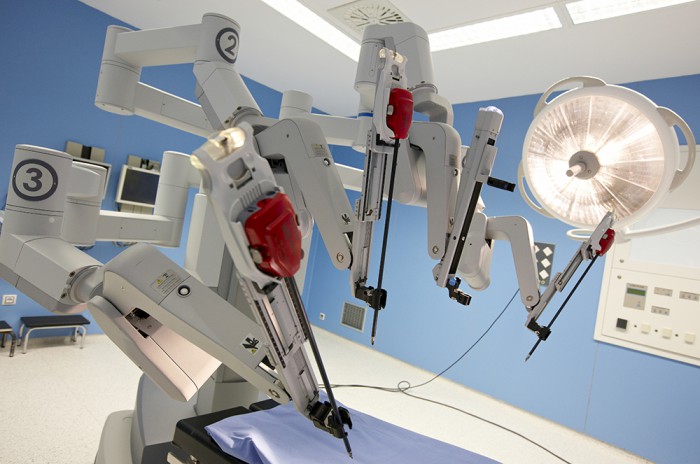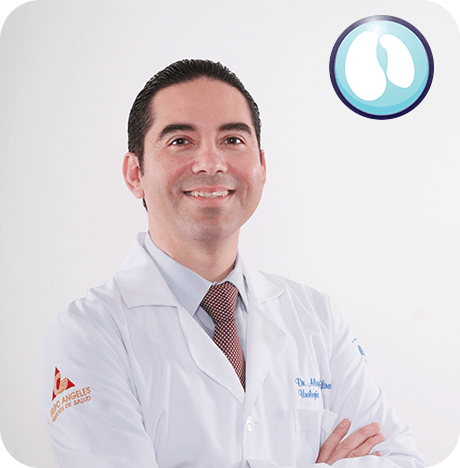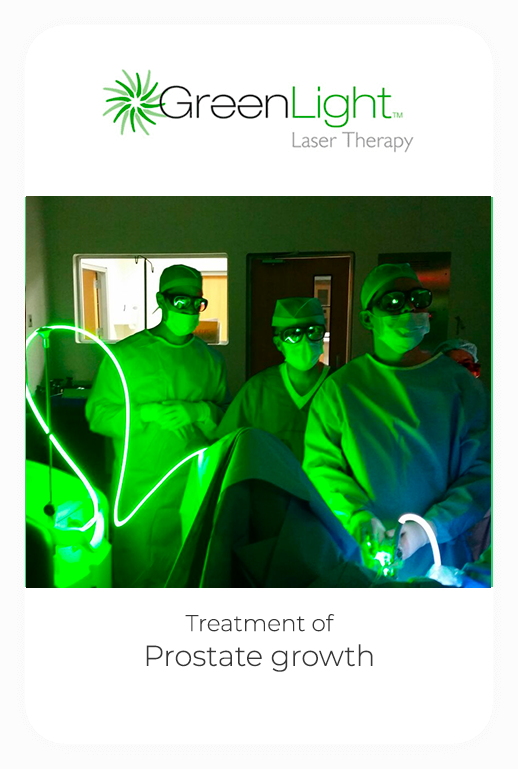
Treatments / Robotic Surgery
Minimally Invasive Surgery
Radical prostatectomy is a surgery in which the prostate is removed in its entirety in addition to the seminal vesicles and sometimes the lymph nodes around the prostate gland. The objective of this surgery is the healing and control of Prostate Cancer.
The surgical-robotic system called "da Vinci®" has revolutionized the treatment of prostate cancer through robotic prostatectomy as a minimally invasive procedure that achieves a better precision and visualization of the surgical anatomy and that in the patient is reflected in your recovery in the short and long term.
Robotic surgery has as a principle laparoscopic surgery, which is assisted by the robotic system "da Vinci®". When performed through small incisions, robotic surgery offers less postoperative pain and faster recovery. The articulated instrumentation, tremor filtering and the magnification of a high definition 3D vision help the surgeon to perform a surgery with greater precision, thus achieving in the patient a lower blood loss, greater possibilities of preserving urinary continence and nerves in charge of sexual potency
All those patients diagnosed with Localized and Locally Advanced Prostate Cancer who have a satisfactory global health status for a surgical procedure are candidates for this procedure.
A prior medical assessment by our medical team is required. Usually, the hospitalization is performed on the day of surgery. The day before the procedure is carried out a preparation and cleaning of the colon by an enema. The day of surgery is transferred to the operating room where the "da Vinci®" robotic surgical system is located. Anesthesia for the procedure is general anesthesia. The team of surgeons start the procedure by making multiple small incisions (1cm) in the abdomen, to then be placed plastic tubes that have the function of being access ports to your abdomen for the three-dimensional camera and the robotic arms of the system "da Vinci" " Once this is done, surgery is performed, in which at all times the surgeon has control through the robotic system console and assisted by a second surgeon on foot of the patient. The duration of the surgery is approximately 3 hours.
In the final stage of surgery, a transurethral catheter or probe is placed after the bladder is reconstructed. Likewise, drainage is also placed from the surgical site to the exterior, this is for the purpose of controlling fluid secretions in the surgical site. The duration of the urinary catheter is 5 to 7 days, which is related to the time it takes to heal and heal the reconstruction of the urethra-bladder. The duration of drainage is approximately 2 to 3 days, depending on the amount of fluid that is drained.
One of the advantages of robotic surgery is the minimal invasion, with less pain in the postoperative period and a faster recovery, which makes the hospital stay 24 to 48 hours in the majority of patients.
The possibility of carrying out an erection to achieve sexual activity is related to the quality of the erection prior to surgery, however the possibility of maintaining pre-existing sexual capacity improves significantly after robotic surgery compared to other alternatives of surgical treatment. After the surgery, exercises and medical treatment are carried out as part of a penitentiary rehabilitation.
The recovery of urinary continence after prostate surgery is unique for each patient, the vast majority achieved in the first 3 months after surgery. After surgery and removal of the urinary catheter, pelvic exercises are started to achieve continence more quickly and effectively.
Currently, due to the new surgical techniques, few patients present these unwanted effects (urinary incontinence and / or erectile dysfunction) after the procedure. If you want more information about the procedure, contact us and a doctor from our team will contact you.
Currently, Robotic Prostatectomy is the treatment modality most used in the US and with a continuous growth in Europe, this due to the excellent results obtained for the control of cancer through a lower invasion. It is considered as the standard treatment for the management of Localized Prostate Cancer.
Benefits of Robotic Prostatectomy:
Rapid reincorporation to usual activities.
Shorter hospitalizations.
Lower risk of urinary incontinence and impotence.
Lower risk of complications
Provide a high resolution 3-D color image
Interpose a computer equipment between the hand of the surgeon and the tip of the instrument
Increase the surgeon's dexterity of the difficult aspects of the procedure
Comfortable position of the surgeon
Intercommunication between the console and the laparoscopic assistant









